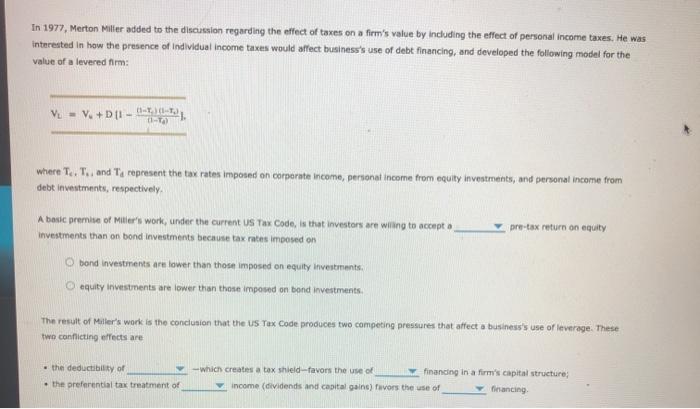Answered step by step
Verified Expert Solution
Question
1 Approved Answer
tax shield of: $840,000; $1,200,000; $2,640,000; $1,920,000 to accept a: greater; lower the deductibilty of: dividends; interest favors the use of: equity; debt tax treatment


tax shield of: $840,000; $1,200,000; $2,640,000; $1,920,000
to accept a: greater; lower
the deductibilty of: dividends; interest
favors the use of: equity; debt
tax treatment of: debt; equity
favors the use of: debt; equity
Step by Step Solution
There are 3 Steps involved in it
Step: 1

Get Instant Access to Expert-Tailored Solutions
See step-by-step solutions with expert insights and AI powered tools for academic success
Step: 2

Step: 3

Ace Your Homework with AI
Get the answers you need in no time with our AI-driven, step-by-step assistance
Get Started


